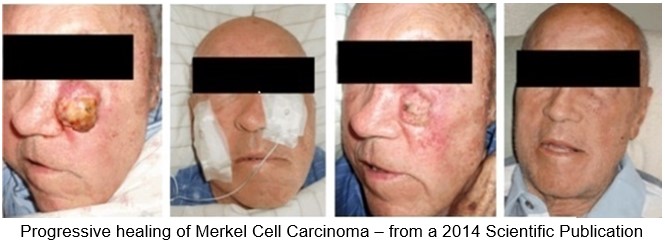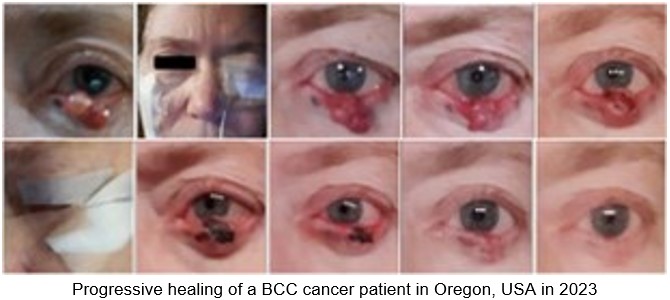(This article has been published in Sept 2024 issue of Health Triangle Magazine of UKHealthRadio in a slightly modified form.)
You must be thinking that this is some sort of a tricky title... or a cruel joke.
But I am really serious.
We hear all the time that cancer is a very complicated disease. Researchers often assert that cancer is not a single but a collection of hundreds of diseases. But what if they say so because they are looking at cancer from the wrong -- genetic (molecular biology) -- point of view? The correct approach may be to look at its biochemistry. This is not just my opinion but the opinion of a major authority in molecular biology, famed Dr. James Watson -- the co-discoverer of the Watson-Crick double-helix model of DNA.
Dr. Watson was director of the prestigious Cold Spring Harbor Laboratory for 40 years (1968-2007), where the emphasis was on the systematic study of cancer-related genes. In 1993 I wanted to discuss with him ideas expressed in my article 'Role of an Enzyme in the Origin of Cancer'. Eventually, he did give me time, but in that 10-minute meeting, he was unwilling to accept that biochemistry could play a role in cancer initiation. He kept describing various mutated genes. I came back disappointed.
But after 23 years, I was shocked, and also delighted, when I read this statement of his in the New York Times on May 12, 2016:
locating the genes that cause cancer has been "remarkably unhelpful"... If he were going into cancer research today, he would study biochemistry rather than molecular biology.
He was 88 years old and retired, so there was little point in contacting him now.
It did show that in the field of cancer I was ahead of Dr. James Watson by about 20 years.
So cancer is complicated only if you are looking at it from a flawed perspective of genes. From a biochemistry point of view, all cancer cells are misbehaving in the same way, making it a single disease. And, looking at the biochemistry of cancer makes a lot of sense since most cancers are caused by chemicals known as carcinogens.
Two concepts of chemistry and biochemistry must be understood to see why cancer may be an easy disease to treat: (1) free-radicals and (2) enzymes.
(1) All chemical compounds contain bonds, which connect various atoms. All these bonds consist of a pair of electrons. A very rare exception occurs when an electron is alone or unpaired. These molecules are called 'free-radicals' and are very reactive and unstable.
(2) Enzymes are specialized proteins which act as catalysts. They carry out almost all transformations in a biological cell.
Coming back to cancer, the pivotal enzyme for cancer growth is, unsurprisingly, the most critical enzyme for DNA synthesis. After all, for a cell to grow, it needs to replicate its DNA. This enzyme is called RnR (Ribonucleotide Reductase) and it makes building blocks of DNA from the building blocks of RNA.
The core structure of RnR is very unique as it contains a free-radical (unpaired electron), stabilized by two iron atoms. Both free-radical and iron atoms are essential for the activity of RnR.
Obviously, this enzyme is a very attractive target for anti-cancer chemotherapeutic drugs. Such drugs have been synthesized for more than 50 years, but unfortunately, they only partially and temporarily block the activity of RnR and are all very toxic.
In 1994, I came up with a novel way of arresting the activity of RnR by passing mild electric current through the cancerous tissue. Electricity is nothing but flow of electrons and some of those electrons would interact with the unpaired electron of RnR and quench it. This should disable RnR and halt cancer growth. Till then, there were about 10 scientific reports where cancer was treated with electricity in animal studies. They all confirmed my proposition that gentle current (at low voltage) would stop cancer growth. In a 1985 study, there was upto 98% tumor-shrinkage after only 5 hours of gentle electrotherapy. (About half the studies did not report positive results because they used higher voltage where toxic electrochemistry takes place, and few electrons were left to interact with the free-radical.)
Then I wrote to all the top cancer institutions ('Comprehensive Cancer Centers') of the time describing the rationale of this novel cancer therapy and compelling experimental evidence in its favor. Only three institutions responded, out of about ten.
One reply was from MD Anderson Cancer Center, Houston -- the topmost cancer research center in the USA. Excerpts from their long letter:
"... very interesting... the [electrotherapy] information ...are interesting and deserving of further investigation...
We will keep the material on file should opportunities arise to study the effects of electric currents on regression of tumors."
That "opportunity" hasn't come in more than 30 years, although the money needed to study cancer electrotherapy would be minuscule.
The other reply was from the National Cancer Institute. It also called my ideas "very interesting" and suggested that I contact Dr. C.K. Chou of the City of Hope Medical Center near Los Angeles who was doing similar research.
I immediately went to meet Dr. Chou. He was treating cancer patients with electrochemistry, on his visits to China, with sporadic success. Dr. Chou introduced me to his friend and colleague Dr. Yun Yen who happened to be doing research on the RnR enzyme. He agreed with me that to destroy RnR free-radical and heal cancer, pure electrotherapy is needed. We planned cooperation so that further research can be done. But the management of City of Hope vetoed the cooperation because such therapy would "not bring patients" to their hospital. By 'patients' they really meant 'money'.
It is not hard to see why a cancer institution would not like to explore and offer a non-patentable and very low-cost cancer treatment. They have bills to pay. Alas, cancer patients are also paying -- with their loss of lives and suffering. It is an unfortunate coincidence that the most effective and non-toxic cancer treatment is not financially attractive.
On my own, during the last 3 decades, I built and continuously improved an electrotherapy device -- and via website cancer-treatment.net get a few patients who have near-surface tumors which can be treated as a home-remedy. Here are photos a few patients healed by this therapy:


For more examples of patients benefiting from GEIPE treatment, please see Treated Patients.
Three scientific reports regarding this cancer treatment have been published:
Biochemistry -- Not Oncogenes -- May Demystify and Defeat Cancer (2023)
Low-level electric current and cancer -- a promising, but languishing non-toxic cancer therapy (2014)
Targeting a key enzyme in cell growth: a novel therapy for cancer (1997)
⬤